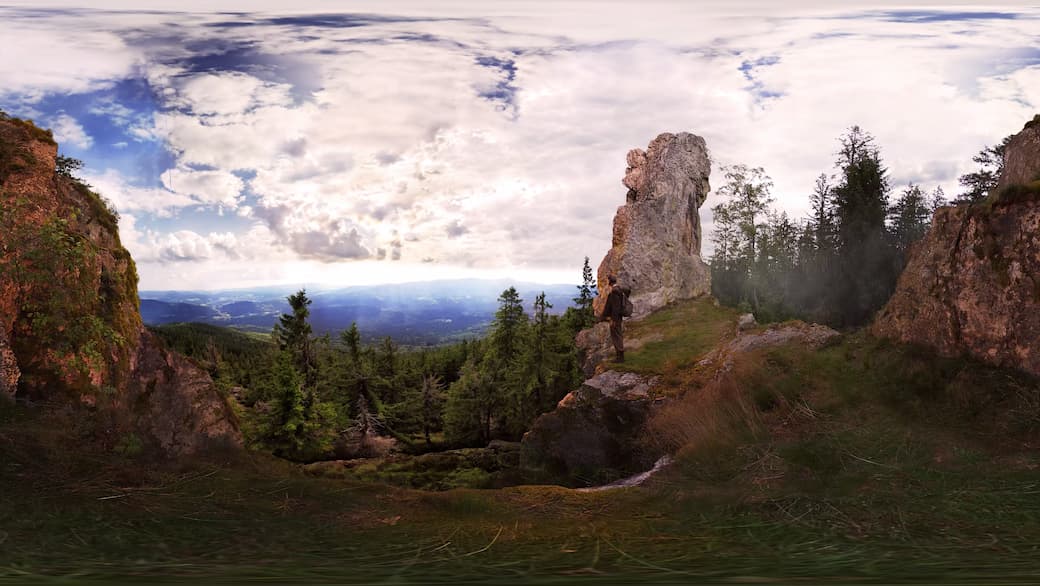
What lies Beyond the Woods (360VR + immersive dome experience)
Update – International Recognition & Awards
Since its release, Escape to the Woods has gained significant momentum on the international circuit. The project has not only been officially selected by eight global festivals, but has also won multiple awards, confirming its impact in both the VR and dome storytelling communities.
Most notably, it received the prestigious “Best Narrative Film” award at the Fulldome Festival 2025, solidifying its position as a benchmark for immersive storytelling in projection-based environments.
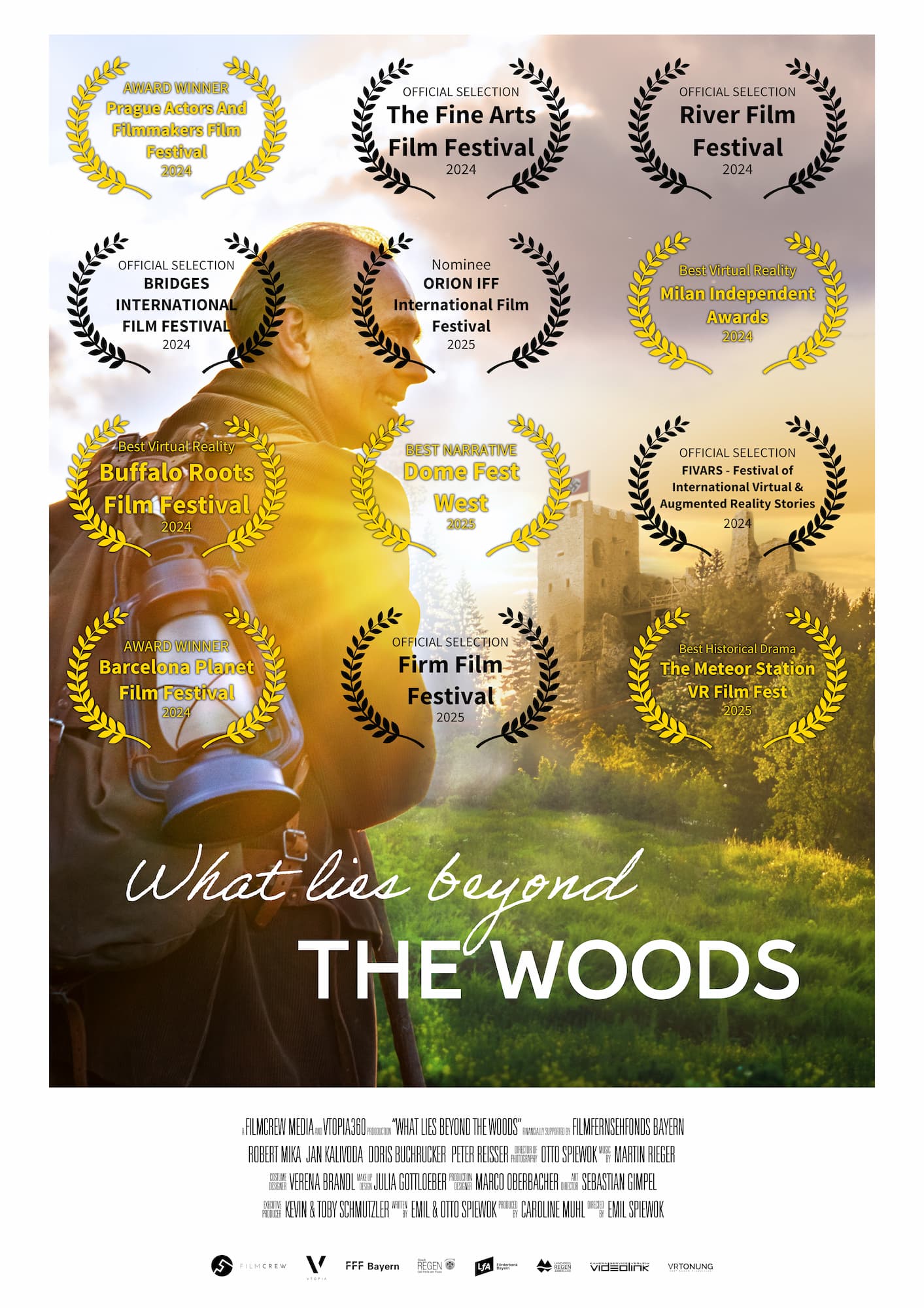
Additional honors include:
- Award Winner – Barcelona Planet Film Festival (2024)
- Best Virtual Reality – Buffalo Roots Film Festival & Milan Independent Awards (2024)
With selections at festivals like FIVARS, River Film Festival, The Fine Arts Film Festival, and more, the film has touched audiences across cultures and continents — proving that empathy, courage, and storytelling know no boundaries.
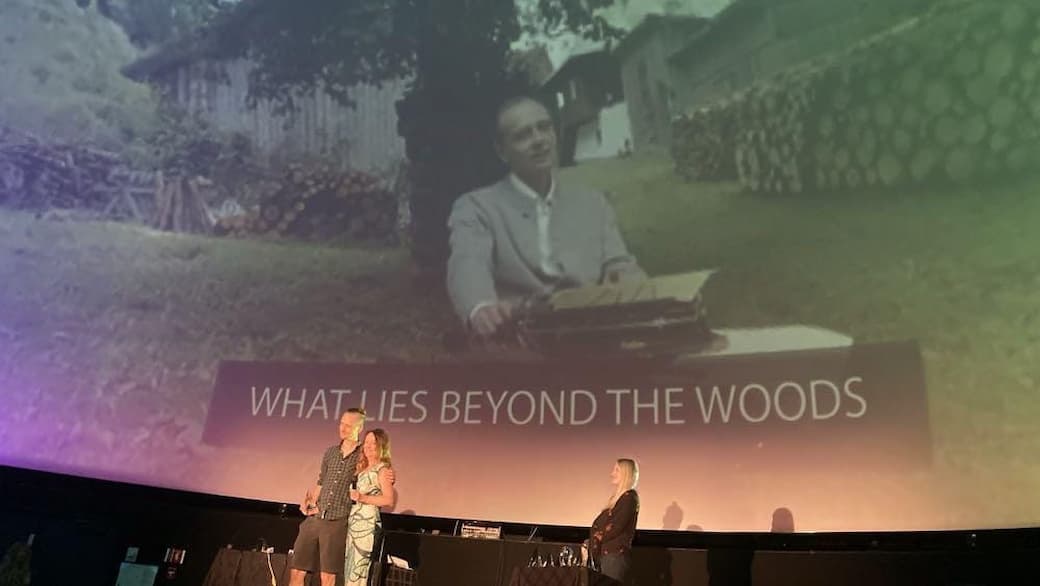
When the vision is so good it can fill a room
What if stepping into a forest meant stepping back in time?“Escape to the Woods” is more than just a VR short film — it’s an 360 immersive dome experience that invites audiences to relive a pivotal moment in 1933 through the perspective of a man torn between belonging and resistance.
The power of immersive storytelling lies in its ability to transport audiences to different times and places, creating a deeply engaging experience. In the realm of corporate events, product launches, and live events, well-known clients utilize our immersive structures, such as domes and cylinders, for various applications including exhibitions, corporate events, and training sessions. The future of immersive media technologies, such as 360 video projection and artificial intelligence, promises ongoing developments and advancements that will continue to enhance media experiences and influence industries like virtual reality and event engagement.
Introduction to Immersive Storytelling
Immersive storytelling is revolutionizing the way we create and experience narratives, offering a new dimension of engagement and captivation. By leveraging cutting-edge technologies such as projection mapping, virtual reality (VR), and augmented reality (AR), businesses and organizations can transport their audiences to entirely new worlds. These immersive experiences are not just about watching a story unfold; they are about stepping inside it.
In the realm of corporate events, product launches, and live events, immersive storytelling has become an essential tool. It allows companies to create memorable and impactful experiences that leave a lasting impression on their audience. Imagine a product launch where attendees can virtually explore the product’s features in a simulated environment, or a corporate event where participants can interact with a brand’s story in a fully immersive space.
The power of immersive storytelling lies in its ability to create spaces that simulate real-world environments, making it an ideal solution for education, training, and entertainment. Advanced technology enables the creation of these immersive spaces, where audiences can experience a story as if they are part of it, blurring the lines between reality and imagination. This transformative approach to storytelling is reshaping how we connect with narratives, making them more accessible, engaging, and impactful.

An Inner Journey with Collective Relevance
At its core, this project explores the emotional complexity of taking a stand in a time of fear — and how inner transformation can lead to collective courage. It’s not about battlefields or politics. It’s about the silent decisions we make when no one is watching.
Questions That Echo Into the Present
This project poses questions that feel as urgent today as they did in 1933:
-
Where does solidarity begin?
-
How far are we willing to go to protect our values?
-
Can silence ever be neutral?
Empathy Over Shock – Designing an Immersive Space for Reflection
Inspired by the real-life story of Baltic writer Siegfried von Vegesack, this immersive space invites empathy rather than spectacle. We didn’t aim to reconstruct history as a museum piece — but to make it felt. The immersive space can accommodate various applications and needs, ensuring versatility and adaptability.
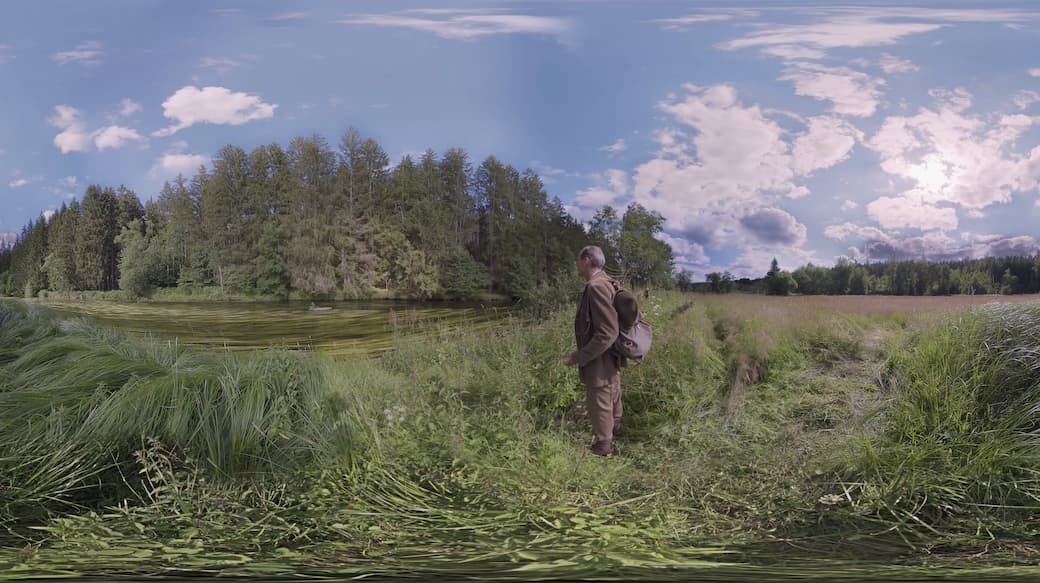
Cultural Significance of Immersive Storytelling
Immersive storytelling has emerged as a cultural phenomenon, influencing various industries and aspects of our lives. The advent of immersive technologies such as VR headsets and projection domes has allowed creators to push the boundaries of traditional storytelling, crafting new and innovative ways to engage audiences. These technologies enable a level of interaction and immersion that was previously unimaginable, making stories more vivid and impactful.
One of the most significant contributions of immersive storytelling is its role in preserving cultural heritage. By recreating historical events and cultural artifacts in a fully immersive environment, people can experience and interact with history in a way that fosters a deeper understanding and connection. This approach not only educates but also creates a sense of empathy and shared experience among audiences.
Moreover, immersive storytelling has the power to bring people together, creating shared experiences that transcend geographical and cultural boundaries. Whether it’s a virtual tour of an ancient civilization or an immersive art installation, these experiences foster empathy, understanding, and connection among participants. As technology continues to evolve, we can expect to see even more innovative applications of immersive storytelling, further enhancing its cultural significance and impact.
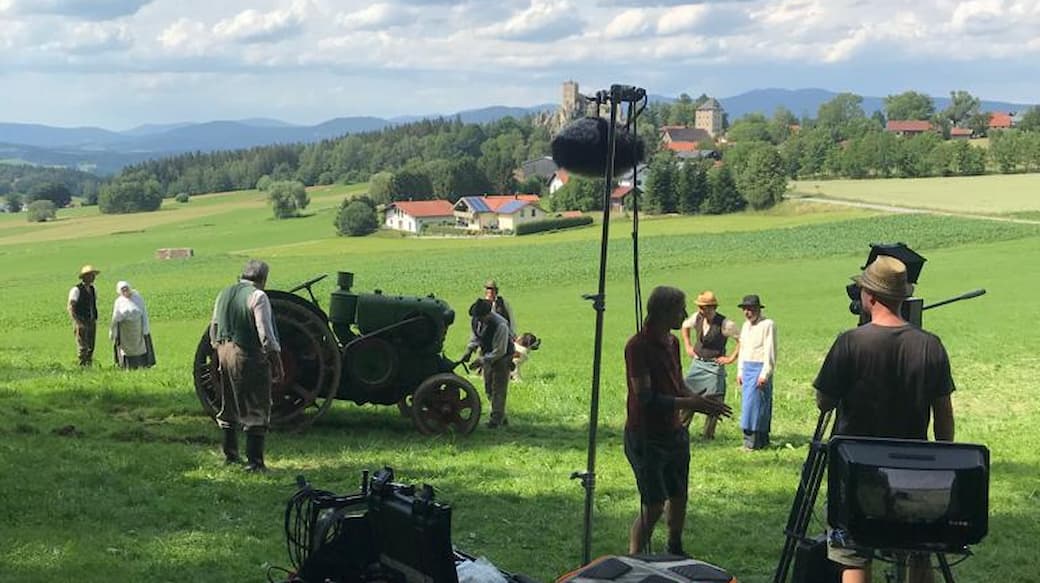
How – 3D Audio and High-Fidelity Immersion
Types of Immersive Technologies
The world of immersive experiences is vast and varied, encompassing several types of technologies that bring stories to life in unique ways. Among the most prominent are virtual reality (VR), augmented reality (AR), and projection mapping, each offering distinct methods of creating immersive environments.
Virtual reality (VR) headsets provide a fully immersive experience, allowing users to step into a virtual world and interact with it in a highly realistic manner. This technology is particularly effective for creating detailed and engaging environments, making it ideal for applications in gaming, education, and training.
Augmented reality (AR), on the other hand, overlays digital information onto the real world, creating a hybrid experience that combines the physical and virtual. This technology is widely used in mobile applications and interactive displays, enhancing real-world experiences with additional layers of information and interactivity.
Projection mapping is a technique that uses projectors to display images onto surfaces, transforming ordinary objects into dynamic, interactive displays. This technology is often used in live events, exhibitions, and installations to create visually stunning environments that captivate audiences. By projecting images onto buildings, floors, and other surfaces, projection mapping can transform any space into an immersive experience.
Other immersive technologies include 360-degree video, which allows viewers to explore a scene from all angles, and spatial audio, which creates a three-dimensional soundscape that enhances the sense of immersion. These technologies, along with 3D modeling and custom software solutions, enable creators to craft highly realistic and engaging experiences that transport audiences to new worlds.
In summary, the diverse range of immersive technologies available today offers endless possibilities for creating captivating and memorable experiences. Whether through VR, AR, projection mapping, or other innovative methods, immersive storytelling continues to evolve, pushing the boundaries of what is possible and redefining how we connect with stories.
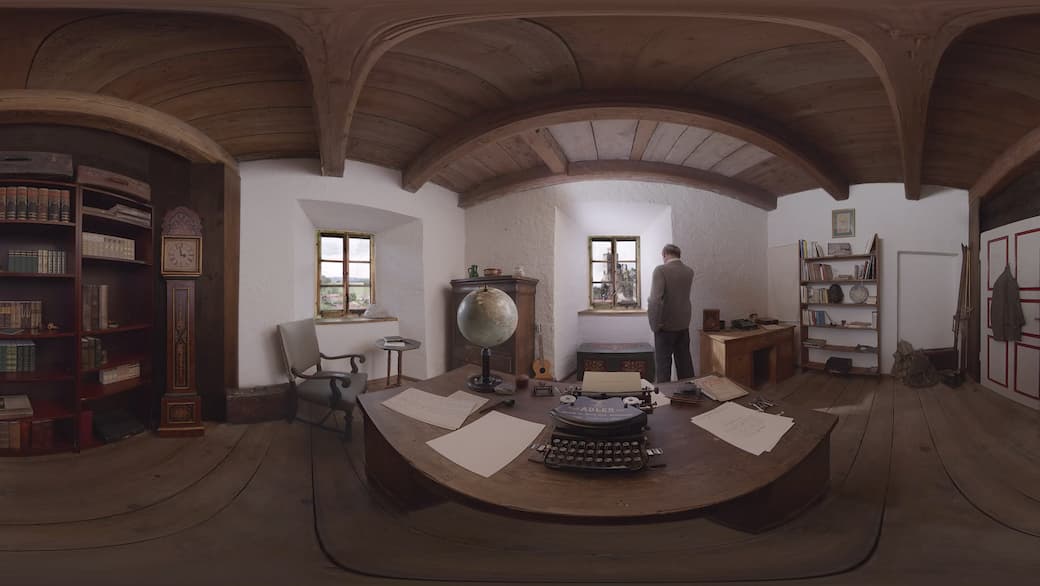
Beyond Ambisonics – Object-Based 3D Audio for Full Immersion
Instead of mixing in Ambisonics, we used an object-based audio system that allows sound elements to be positioned and moved freely within the immersive dome. This setup supports playback of up to 22.2 channels, offering incredible spatial detail and flexibility for various venue configurations — from compact projection domes to VR headsets and live events. The system includes comprehensive support for installation and ongoing help during projects.
The result: sound doesn’t just surround the viewer — it follows, breathes, and reacts.
8K Visual Fidelity – Built for Dome and VR
The project was created and shot in ultra high-resolution (8K equirectangular) using a custom-built 360° cinema camera rig. This visual fidelity enhances the emotional weight of the story, whether viewed in a VR headset, a media-based immersive space, or projected inside a dome.
We crafted perspectives only VR can deliver — from the micro-level of dew-drenched moss to the disorienting fog of a Bavarian swamp.
Projection Mapping Meets Poetic Cinema
The visuals were tailored for projection mapping inside domes, using a custom software system that enables seamless blending of live-action footage with atmospheric VFX and sound-reactive elements. This synergy allows audiences to feel inside the scene rather than merely watching it.
Original Music Score – Composed to Resonate
The score was fully self-composed, blending traditional instrumentation with ambient textures. It mirrors the emotional arc of the protagonist, reinforcing moments of fear, clarity, and transformation.\ Sound and music work together to guide the audience through the emotional architecture of the forest — and the psyche of Siegfried von Vegesack.
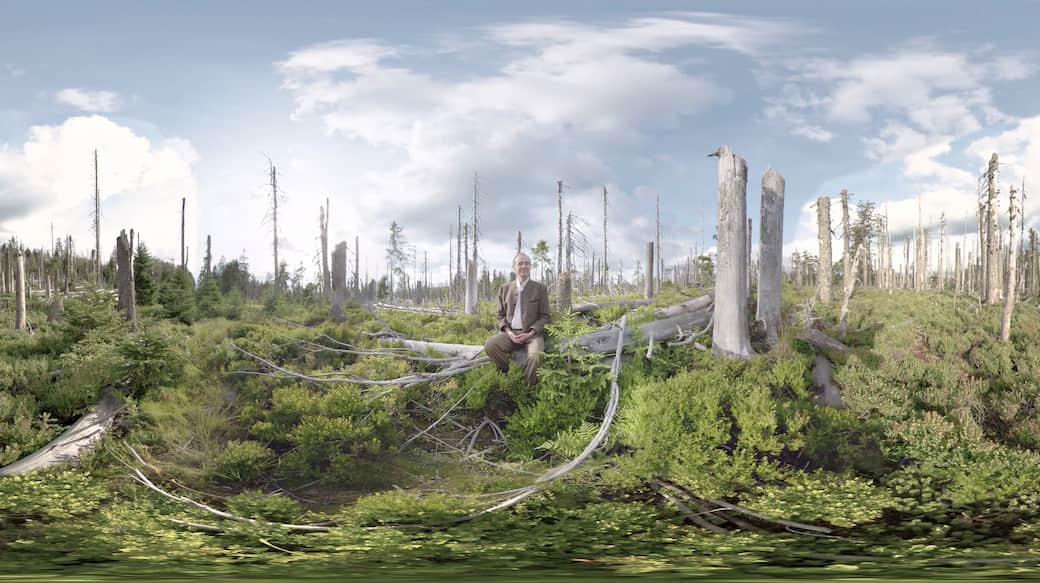
What – Escape to the Woods: A VR Time Travel Installation
Escape to the Woods – A VR Time Travel Installation
Escape to the Woods is a 10–18 minute immersive VR short film, designed for 360° dome projection, VR headsets, and custom immersive spaces. It transports audiences to 1933, deep into the Bavarian Forest, to experience a writer’s personal reckoning in the shadow of political upheaval.
This flexibility makes the experience accessible for a range of venues. The immersive domes are available in various diameter sizes, from smaller venues of 10′ to larger installations up to 400′, catering to both indoor and outdoor settings.
Multi-Platform Flexibility
Thanks to its modular projection system, the experience runs across various formats:
-
Projection domes for live events, exhibitions, and corporate showcases
-
VR headsets for individual introspection or museum setups
-
Outdoor installations and hybrid formats with media server control
This flexibility makes the experience accessible for a range of venues, from planetariums and education centers to art festivals and product launches.
Immersive Specs & Format
-
Format: 360° 6K equirectangular video
-
Audio: Up to 22.2 channel, object-based 3D audio
-
Languages: German, Bavarian dialect, Czech
-
Runtime: 24 minutes
-
Technology: Custom media server + software-based projection control
-
Use Cases: Public exhibitions, dome screenings, VR showcases, educational outreach
The trailer has no spatial audio due to the current limitations of YouTube, updating from Ambisonics to Eclipsa audio.
Proven Impact – Festival Presence & Emotional Reach
Premiered at five international festivals, Escape to the Woods has resonated with diverse audiences through its unique blend of immersive technology, historical storytelling, and emotional design. It’s not just entertainment — it’s a conversation starter. The VR installation is effective in delivering a more intimate and personal experience for users.
Let’s Create Your Immersive Audio Story